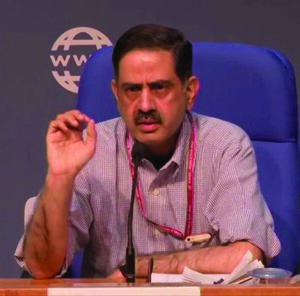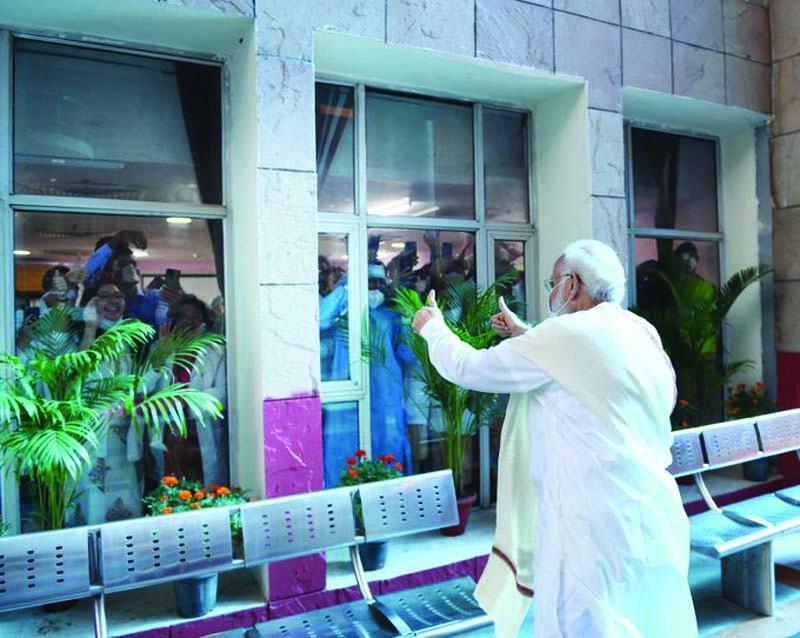
Dr Balram Bhargava
Firstly, the unstinting dedication and untiring efforts of our frontline workers and healthcare professionals involved in the vaccination drive, who have risked their health to work without breaks through the pandemic is one of the main reasons we could achieve this milestone of crossing over 100 crore COVID-19 jabs..
Secondly, the rich experience of carrying out one of the world’s largest universal immunization programmes for infants, children, and new mothers, over last several decades had strongly equipped our ministry of health to lead such an exercise.
Thirdly, an aligned holistic approach of different arms of the government with a singular focus to make vaccination drive a success contributed to this journey.
- Now as we know, the international academia has appreciated the scientific evidence on Covaxin, that has been published in over 15 papers
- Our academia in these spaces will have to be incentivised and need to benefit from the intellectual property they create, for them to be motivated about innovation
The brilliant sync with which different units such as the NITI Aayog, the Indian Council of Medical Research; expert groups, such as NEGVAC, empowered committees; and ministries such as the ministry of health, worked set a new benchmark in cohesive coordination.
Country’s clear commitment to public health pays off
And it is this ability of the whole of the government to work together as well as strike successful public-private partnerships, where needed, that has resulted in a series of victories in these times of extreme uncertainties. Whether it be the development of CoWIN, or the pragmatic way we prioritised vaccination for different groups, getting right many of those small steps nestled within the large vaccination drive resulted in the country achieving these 100 crore vaccines milestone. Beyond all, the country showed a clear commitment to public health, and that paid off.
In the development of this vaccine and this partnership, I think the most important aspects have been complete trust and the level of mutual appreciation for each other’s calibre between the public and the private partner. It worked two ways, ICMR’s trust in Bharat Biotech, or Bharat Biotech’s faith in ICMR.
Clear scientific basis
Right at the outset, we had clearly decided that the steps we follow must have a clear scientific basis and whatever we do should be documented in scientific journals. Now as we know, the international academia has appreciated the scientific evidence on Covaxin, that has been published in over 15 papers. These publications in highly acclaimed peer-reviewed global scientific literature cover the entire spectrum of vaccine development, whether it be preclinical development, small-animal studies, hamster studies, large animal studies, all phases of clinical trials, including the phase-III trial which is one of the largest in the world. These studies also include the vaccine’s efficacy against the emerging virus variants, Alpha, Beta, Gamma, Delta.
Co-developing Covaxin enriched science and public health in the country

Firstly, this experience has instilled self-confidence in us that India is now much more than the pharmacy of the world. It is also a vaccine superpower. This confidence in being able to develop new vaccines from the scratch now pervades the industry and the academia, and it is the right time to use our learnings from these experiences to develop new vaccines for other diseases and scale them up. This should be not only done for the Indian population but for the world population at large, as the underlying principle of all our efforts is ‘Vasudhaiva Kutumbakam’ or ‘the world is one family’.
Incentivise academia
Secondly, for decades altogether we were largely known as a powerhouse for generic drug-making. This experience in COVID-19 has acted as a catalyst for us to move up the value chain and take a leap into drug discovery or vaccine-discovery space to be specific. If this has to take off, the industry and academia will have to collaborate in a big way. This is already happening in the engineering space where professors in IITs do consultancies and partake in innovation. The mechanism is yet to be streamlined in the biomedical space, and medical sciences. Our academia in these spaces will have to be incentivised and need to benefit from the intellectual property they create, for them to be motivated about innovation. Those pathways we still have to establish.
I think our system is currently working like a turbo-charged well-oiled machinery vaccinating at a very fast rate, and we are advancing rapidly to reach that target. I think the world is watching us and will be witness to the fact that our vaccination drive has not only been very agile but also very responsive and responsible.
(The author of this article Dr Balram Bhargava is the Director-General of The Indian Council of Medical Research.)









